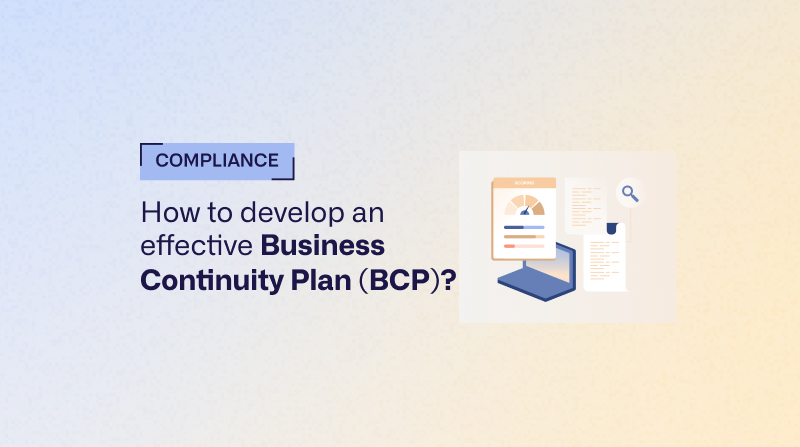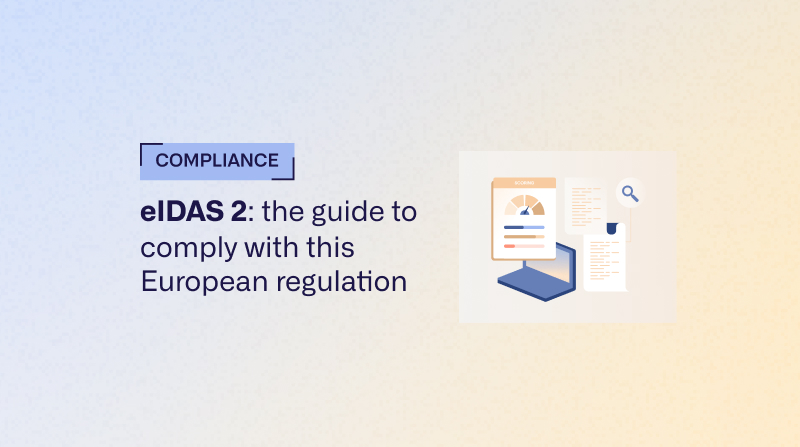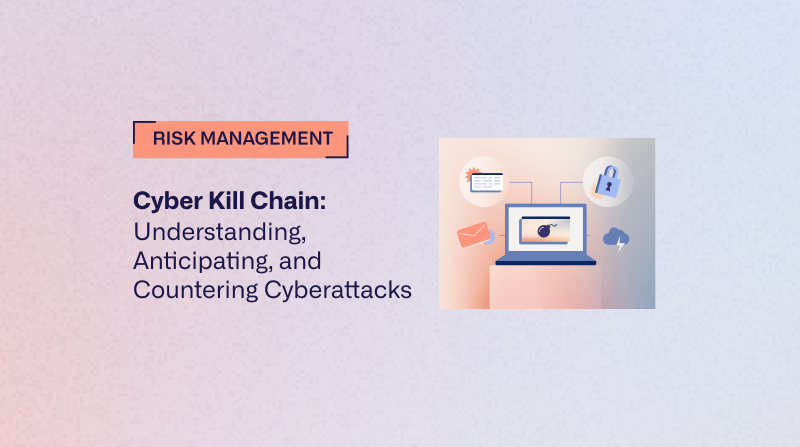How to develop an effective Business Continuity Plan (BCP)?
Many events can disrupt the functioning of an organization, or even paralyze its activities: cyber attacks, computer failures, health crises, disasters... Businesses must be able to deal with these incidents and know how to respond in an agile and adapted manner.
To achieve this, a structured and strategic approach is required: this is where the Business Continuity Plan (BCP) comes in. This tool ensures better crisis preparedness and contributes to organizational resilience of any type of business.
In this article, we look back at the importance of PCA and the steps to design a robust PCA.
What is the PCA for and why is it essential?
The Business Continuity Plan (BCP) is a set of organizational arrangements, technique and humane aimed at ensuring the continuation of an organization's activities in the event of a major disruption.
Its objective is simple: ensure the operational resilience of the business. With a robust PCA, the company must be able to continue to operate, even in degraded mode, until the situation returns to normal.
The benefits of developing a PCA are multiple:
- Employee protection and sensitive data ;
- Reducing economic losses ;
- Preserving reputation ;
- Regulatory compliance ;
- Competitive advantage sustainable in the face of unprepared businesses.
A PCA is not an option reserved for large companies:
- An SME without a continuity plan can lose customers, data or markets in a few days of downtime.
- Large groups, subject to regulatory requirements (banks, health, energy), must demonstrate their ability to maintain their essential activities.
- Public organizations must ensure the continuity of their services, even in the event of a crisis.
Focus on the computer PCA (PCI)
The IT PCA, or IT Continuity Plan (PCI) is an essential part of the global BCP. It aims to guarantee the availability and integrity of information systems in the event of an incident.
No business is safe from a computer disaster : physical risks weighing on infrastructures, multiplication of cyberattacks (ransomwar, phishing, viruses, etc.), human errors, etc. Organizations' dependence on their information system makes them all the more vulnerable. The PCI is therefore vital to ensure their computer resilience.
Step 1. Define the context and goals of the business
This first step is essential. It determines the effectiveness of the entire process.
This phase makes it possible to understand the context in which the PCA will apply and to identify all specifics of the organization which will be able to guide strategic choices.
It is necessary to take into account the external contextne (e.g. political, social, cultural, legal, economic and financial environment, etc.) and the internal context (internal human resources management policy, IT, organization, processes, information system, flow, etc.).
This analysis is necessary to assess the level of risk acceptable to the company, and to subsequently guide the continuity strategy.
Concrete example:
An IT services company hosting critical customer data has the priority objective of maintaining the availability of its cloud platforms.
Their PCA therefore aims to ensure the continuity of the hosting service and technical support, even in the event of a cyberattack or a major data center outage.
Step 2. Identify continuity needs
The next step is to identify the essential minimum service level to the survival of the company for each essential activity and critical process. Here, it is also interesting to define the maximum acceptable downtime.
This part answers a few key questions:
- What activities Do they absolutely have to continue in the event of a crisis?
- What would be the consequences financial, legal, human or even reputational after an interruption?
- What resources (human, technical, logistical) are necessary?
consultancy : use a GRC tool to map processes, associated systems and interdependencies (applications, servers, service providers).
Step 3. Identify and assess priority risks
A solid PCA is based on identification andparses Of risks. This step is essential to quantify the probability of occurrence of the various risks and their impacts. These elements are essential in order to decide what actions to take.
Identifying risks requires working closely with those responsible for the organization's businesses and processes.
Examples of risks related to information systems:
- Cyber attack (ransomware) : total server encryption, loss of access to data.
- Hardware failure : failure of a production server.
- Cloud incident : unavailability of a key SaaS provider.
- Human error : accidental deletion of data.
- Electrical failure or Network outage on the main site.
Each identified risk must be classified and prioritized according to its severity. The aim is to focus efforts on the most critical scenarios.
Step 4. Define possible scenarios
Once the context is known, the objectives set and the risks identified, the company must formalize realistic continuity scenarios. Each scenario describes the crisis situation, his consequences And the Expected responses.
In the case of an IT PCA, one of the scenarios could be a ransomware attack:
- Symptom: encrypted servers, inaccessible services.
- Answer: switch to the emergency environment, restore from offline backup, notification from the RSSI and DPO.
Limit yourself to a few relevant scenarios, but Document them precisely (triggers, managers, actions, means). This approach allows you to have ready-to-use solutions in case of incidents.
But be careful, businesses must still stay agile and adapt to incidents in real time.
Step 5. Define the strategy and the means to be implemented
The PCA must be based on a clear continuity strategy, articulated around human, technical and organizational resources. The aim here is to formalize the strategy adapted to each risk scenario.
It is necessary to specify the service retained for each activity, as well as the resources, means and proceedings allowing the objectives to be achieved.
Several axes must be considered. Here are a few examples:
1. Technical strategy
- Redundancy servers (cluster, real-time replication).
- Outsourced backups and encrypted.
- Fallback sites (hot, warm or cold).
- Virtualization to quickly redeploy production environments.
2. Organizational strategy
- Crisis communication plan (internal, customers, partners).
- Delegation procedures to ensure the continuity of management.
- Training and awareness-raising from staff to continuity actions.
3. Logistics strategy
- Alternative ways : teleworking, relay service providers.
Step 6. Write and document the plan
Once the strategies have been validated, it is necessary to write the PCA in a way Claire, reachable and exploitable. This document should be used asoperational tool, no simple theoretical support.
Each procedure should be Documented. Documentation should be easily accessible when needed and understandable, even by people who have not yet been trained.
The PCA should contain:
- La governance of the plan (roles, responsibilities, contacts).
- Les detailed scenarios and their associated procedures.
- Of reflex sheets for each type of incident.
- Of Checklists verification and recovery.
- The communication plan (alert templates, preformatted messages).
Tips :
- Centralize documentation in a software CRM.
- Make sure that a offline copy be available in case of network unavailability.
Step 7. Test and update the plan
An untested PCA has no operational value.
Several complementary approaches can be implemented to check the feasibility of the plan, measure the reactivity of teams and improve procedures :
- Documentary test : validation of the content of the plan by the managers.
- Technical test : test the implementation of devices, such as a simulation of the failover of a server or an application.
- Crisis test : a global exercise involving all teams (cyber attack simulation, network loss, etc.) to verify that continuity procedures are well understood and feasible within the prescribed deadlines.
Directly linked to changes in the company, the PCA needs to be revised at least once a year, or at each major event (new IT infrastructure, change of organization or supplier...) since the context, objectives and risks may change.
Regularly updating the business plan ensures its long-term effectiveness. This one must be integrated into your GRC approach to remain compliant and resilient.
Best practices for a solid PCA
- Involve senior management : PCA is a strategic issue, not just an operational one.
- Involving jobs from the start : they know the critical processes and the constraints in the field.
- Prioritize communication : in the event of a crisis, clear and structured communication prevents disorganization.
- Include key providers : IT subcontractors, hosting providers, critical suppliers must be integrated into the plan.
- Test regularly : an untested PCA loses all value.
- Keep documentation up to date : each evolution (technological, regulatory, organizational) must be reported in the PCA.
- Measuring performance : follow the indicators and adjust the plan continuously.
Integrate PCA into your GRC approach with Egerie
One Effective Business Continuity Plan is much more than a regulatory document: it is a a lever for resilience and trust. With the multiplication of cyber threats, the IT PCA has become an essential pillar of any strategy of security and risk governance.
For greater reliability, the plan must be integrated into your GRC approach:
- Centralization of processes : all plans, risks and controls are accessible in the same interface.
- Monitoring of continuity indicators (RTO, RPO, successful test rate...).
- Alerts and dashboards to anticipate drifts.
- Document management plans and procedures.
- Traceability and compliance, in particular with respect to ISO 22301 standards and ISO 27001, to facilitate audits.
A GRC platform like Egerie allows you to go even further in the operational resilience of your organization. Your business continuity strategy becomes measurable, managed and integrated into global governance:
- Diagnose and map easily all your cybersecurity risks;
- Simulate incident scenarios to predict operational, human, financial and regulatory consequences;
- Ensure compliance continuously in a simple way;
- Facilitate management decision making thanks to clear reports.
Request a demo of the Egerie platform and discover how to integrate PCA into a GRC approach for an optimal cyber strategy.
Business Continuity Plan FAQ
Is the PCA mandatory for all businesses?
The PCA is mandatory for certain critical sectors, such as banking or health. While it is not legally mandatory for other sectors, it is still strongly recommended for all businesses in order to better deal with crises.
What is the difference between PCA and PRA?
The PCA aims to maintain activity during the crisis, while the PRA intervenes after the crisis to restore systems. The PCA therefore has a wider scope and a more strategic dimension.
What is the purpose of the PCA in the event of a cyber attack?
The PCA includes data backup measures, alternative communication systems, and procedures to maintain critical operations, thereby minimizing business interruptions.
What are the standards governing the PCA?
The reference is the ISO 22301 standard, which defines the requirements for a business continuity management system. The ISO 22301 certification therefore attests that a business continuity management system is well established in the organization. The ISO 27001 standard, on the other hand, defines a strict framework for information security management.
How do you involve employees in the PCA?
There is a need to regularly train and inform employees about the PCA. Regular exercises and awareness-raising sessions help prepare them to act effectively in the event of a crisis.
How to effectively test your PCA?
The tests must simulate realistic situations: network outage, unavailability of a site, unavailability of a supplier. The objective is to assess the coordination and the speed of response of the teams. The effectiveness of the PCA can also be measured through regular audits and reviews of past incidents.








